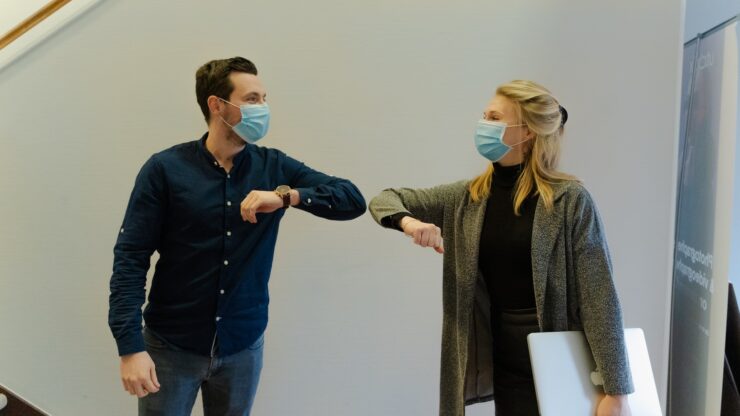The COVID-19 pandemic sent shockwaves through every aspect of our lives, fundamentally altering the way we interact, work, and even shop. As lockdowns and restrictions swept across the globe, businesses and consumers had to swiftly adapt to a new reality. Shopping, once a routine activity, underwent a remarkable transformation. In this article, we delve into the changes that reshaped the shopping landscape during the pandemic, from the rise of e-commerce to the evolution of in-store experiences, while also exploring recent developments that continue to shape the future of retail.
The E-commerce Boom
One of the most profound changes in shopping behavior was the massive surge in e-commerce. With physical stores closing their doors or facing limited capacity, consumers turned to online platforms for their shopping needs. This accelerated the growth of e-commerce, as individuals of all ages and backgrounds embraced the convenience of shopping from the safety of their homes. Online marketplaces, from industry giants like Amazon to local businesses, saw unprecedented demand. The pandemic prompted many small businesses to quickly establish or enhance their online presence, showcasing the adaptability and resilience of entrepreneurs. This shift wasn’t just about necessity; it marked a pivotal moment that may forever alter the retail landscape, prompting businesses to prioritize digital channels even as physical stores reopen.
Contactless Shopping
The fear of transmitting the virus through surfaces led to the rise of contactless shopping. Contactless payment methods, such as mobile wallets and “tap to pay” credit cards, gained traction as people sought ways to minimize physical interactions. Retailers also adopted touchless approaches, including QR codes for menus and product information, reducing the need for shared physical materials. Curbside pickup and home delivery gained popularity as well. Customers could shop online and retrieve their purchases without entering the store, minimizing exposure while still supporting local businesses. Retailers implemented dedicated pickup zones and refined their delivery services, bridging the gap between the digital and physical shopping experience.
Virtual Try-Ons And Augmented Reality
The inability to physically try on clothes or test products presented a challenge for retailers. However, technology came to the rescue with virtual try-ons and augmented reality (AR) experiences. Fashion brands and beauty companies developed apps and tools that allowed customers to virtually try on clothes, accessories, and cosmetics before making a purchase decision. This innovation not only enhanced the online shopping experience but also showcased the potential of AR in other industries. Consumers became more comfortable with using technology to bridge the gap between the online and offline worlds, hinting at a future where immersive experiences could become the norm.
Reimagining In-Store Experiences
Physical stores had to adapt to changing customer expectations. The emphasis shifted from mere transactions to creating safe, engaging, and memorable in-store experiences. Retailers implemented stringent cleaning protocols and social distancing measures to ensure the safety of both customers and employees. Interactive displays and technologies that provide real-time information about products became more common. In some stores, customers could scan QR codes to access detailed product information, customer reviews, and even watch demonstration videos. This hybrid approach combined the convenience of online shopping with the sensory and experiential aspects of in-store browsing.
Sustainability And Ethical Shopping
The pandemic prompted a collective reflection on consumption habits and their impact on the environment and society. As a result, more consumers began prioritizing sustainability and ethical practices when making purchasing decisions. This shift encouraged retailers to be more transparent about their supply chains, sourcing, and production methods. Local businesses and artisans also received increased attention, as communities rallied to support each other during challenging times. The “shop local” movement gained momentum, reinforcing the importance of neighborhood businesses in fostering a sense of community and economic stability.
The Role Of Social Media
Social media platforms became more than just channels for sharing photos; they evolved into powerful tools for shopping. Influencers and content creators showcased products in a relatable, authentic manner, making it easier for consumers to discover and evaluate items from the comfort of their screens. “Social commerce” emerged as a new trend, blurring the lines between social media and e-commerce. Platforms like Instagram and Facebook introduced features that allow businesses to set up digital storefronts, enabling users to browse and purchase products seamlessly within the app.
Personalization And Data Privacy
As online shopping continued to grow, so did the importance of personalization. E-commerce platforms leveraged data analytics and artificial intelligence to understand consumer preferences and tailor shopping experiences. Product recommendations, personalized emails, and targeted advertisements became integral parts of the online shopping journey. However, this trend also raised concerns about data privacy. Striking the right balance between offering personalized experiences and respecting user privacy became a priority for both businesses and consumers.
Challenges And Opportunities For Small Businesses
While the pandemic ushered in transformative changes, it also highlighted the challenges faced by small businesses. Many local shops and boutiques struggled to navigate the digital landscape, lacking the resources to establish a robust online presence. However, this challenge also sparked creativity and collaboration. Marketplaces and platforms emerged to support small businesses, providing them with the tools and visibility needed to reach a wider audience. Consumers rallied behind initiatives to #SupportSmallBusiness, recognizing the unique value these enterprises bring to their communities. This resurgence of local support has the potential to reshape the retail ecosystem by fostering a stronger connection between businesses and their customers.
Changing Dynamics Of Supply Chains
The pandemic exposed vulnerabilities in global supply chains, prompting businesses to reconsider their reliance on distant manufacturing hubs. Disruptions in production and distribution highlighted the importance of agility and resilience in supply chain management. Some businesses began to pivot towards localized production and sourcing, aiming to reduce dependencies and ensure a more consistent supply of goods. This shift may contribute to a shift in consumer preferences as well. With a growing emphasis on sustainability and ethical considerations, consumers might increasingly seek out products with transparent supply chains, supporting businesses that prioritize local production and responsible sourcing.
The Hybrid Shopping Experience
As restrictions eased and vaccination efforts progressed, a hybrid shopping experience emerged. Consumers now have the choice to shop in-store, online, or through a combination of both. This flexibility reflects the diversification of shopping preferences and underscores the importance of providing a seamless experience across different channels. Retailers are exploring ways to bridge the gap between the physical and digital realms. For instance, some brands are experimenting with virtual shopping assistants that guide customers through products while browsing online. Conversely, in-store technologies continue to evolve, offering features like instant checkout through mobile apps and interactive digital displays.
The COVID-19 pandemic propelled the world of shopping into a new era, redefining the relationship between consumers and businesses. E-commerce firmly established its dominance, while concepts like contactless shopping, augmented reality experiences, and virtual try-ons became integral parts of the retail landscape. The pandemic also illuminated the importance of sustainability, community support, and ethical practices, which are likely to shape consumer behavior and business strategies for years to come. As we navigate the post-pandemic landscape, it’s evident that the changes sparked by the crisis are not fleeting but rather represent a fundamental shift. Businesses, both large and small, must remain agile and responsive to evolving consumer expectations. The resilience displayed by individuals and enterprises during this time serves as a testament to our ability to adapt, innovate, and thrive in the face of unprecedented challenges. The lessons learned will continue to shape the way we shop, interact, and experience the world around us.




